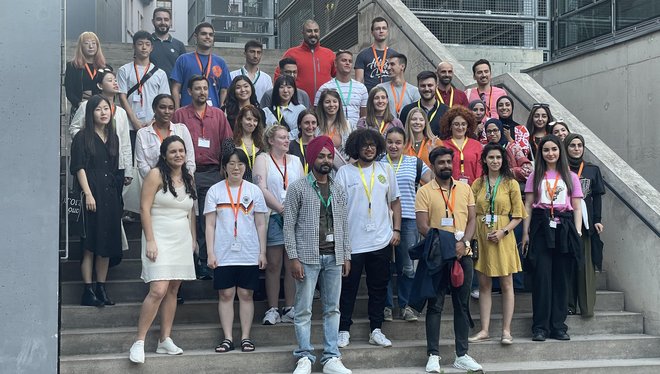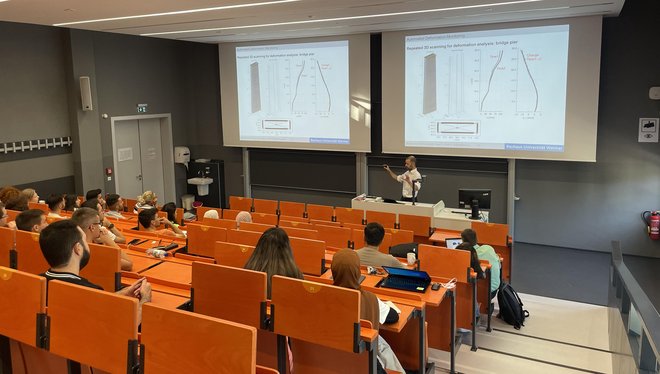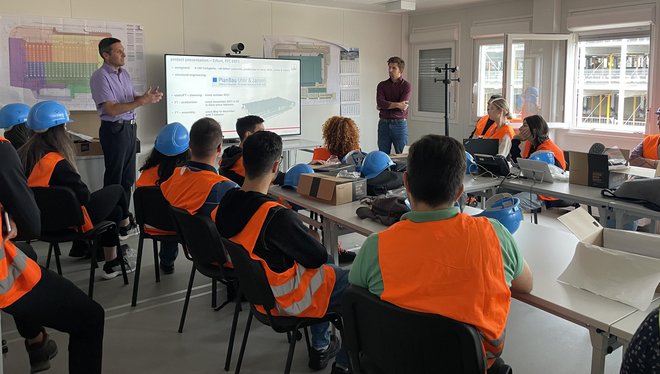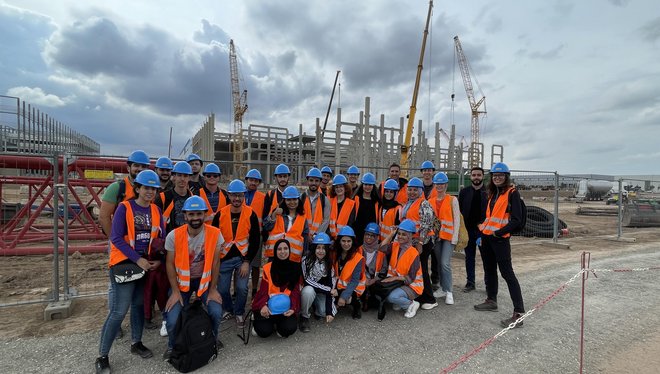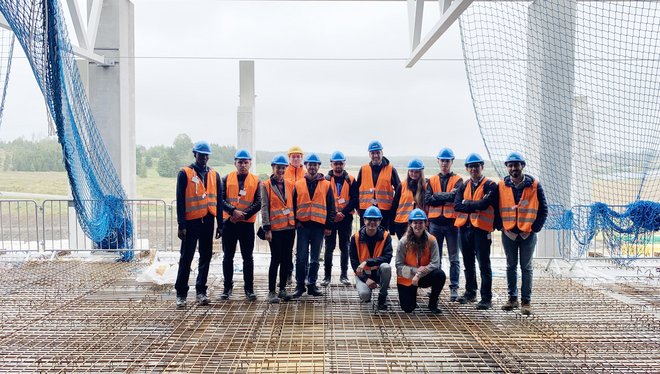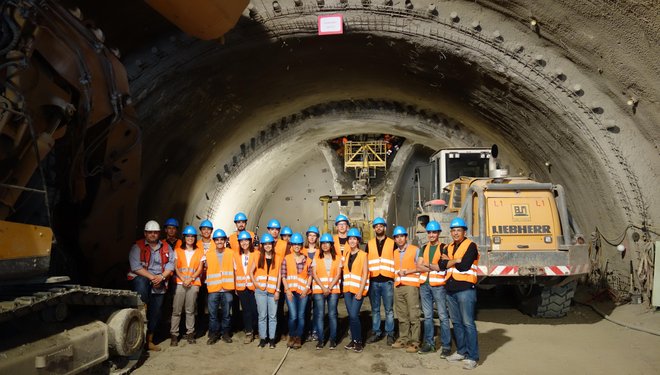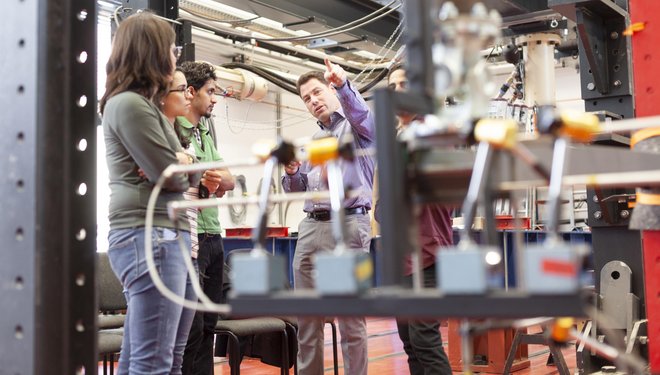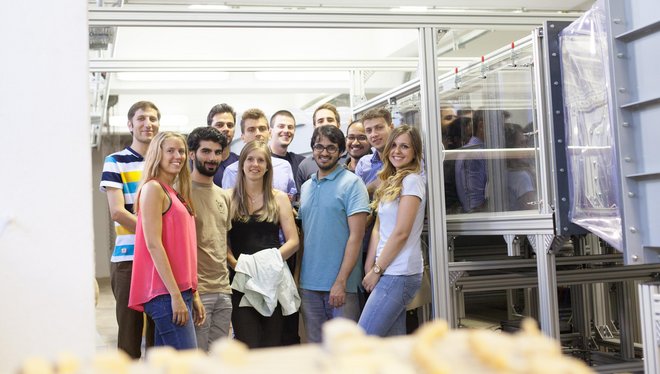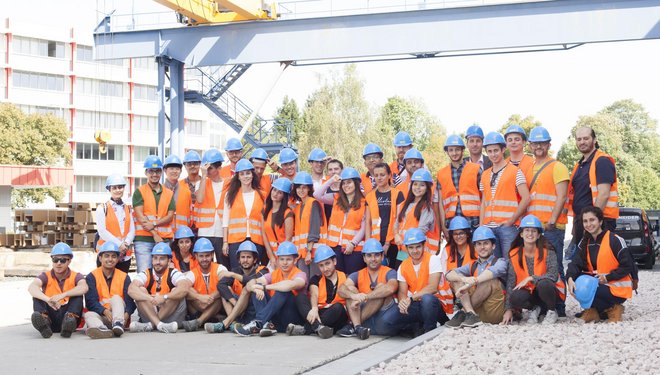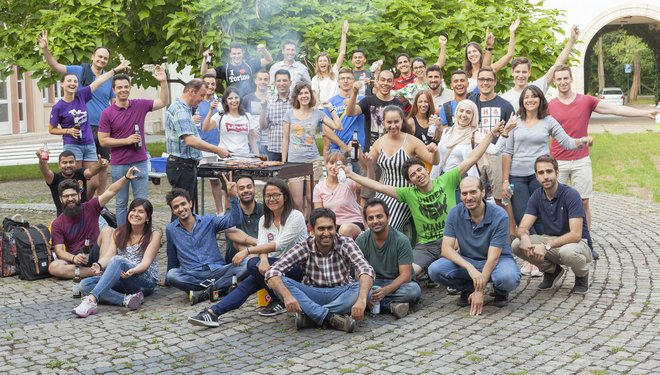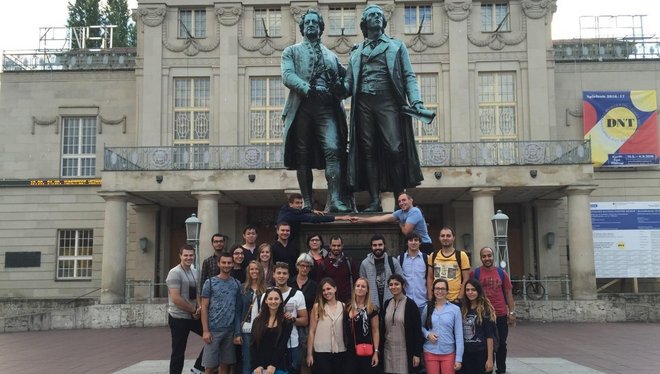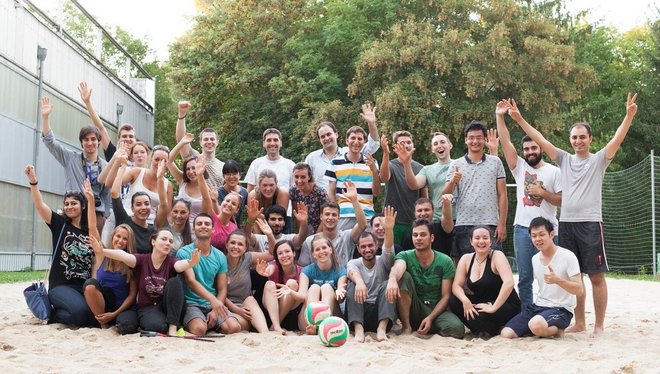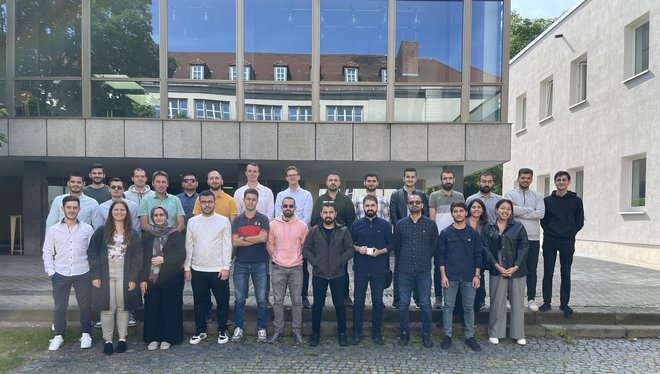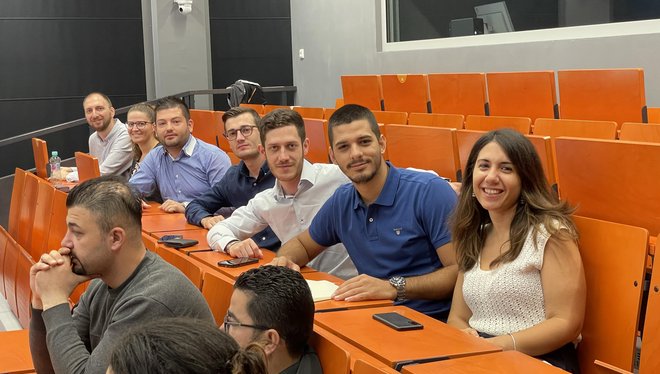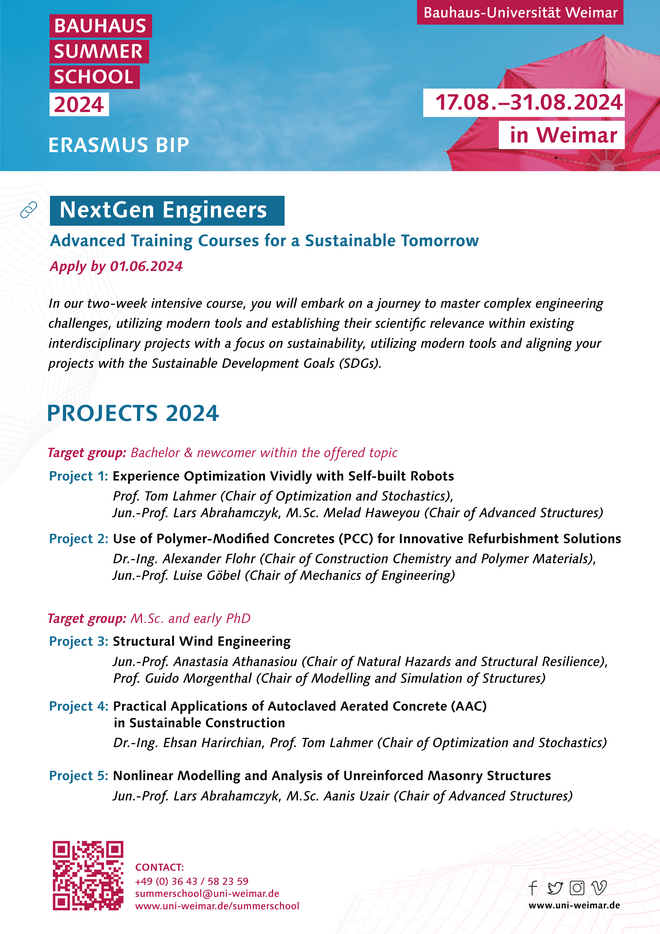Die Professur Komplexe Tragwerke bietet Projekte und Abschlussarbeiten auf Englisch und Deutsch an. Interessierte Studierende können entweder aus der Liste der vordefinierten Themen auswählen oder ihre eigenen Ideen einbringen. Die Professur fördert in hohem Maße neue Forschungsideen.
Angebotenen Themen
Die Liste der angebotenen Themen wird regelmäßig aktualisiert!
Masterarbeiten:
Investigation of the capabilities of masonry infill macromodels to account for strengthening measures (L. Abrahamczyk)
Damage quantification of RC frame structures using low-cost building monitoring data (M. Haweyou)
Assessment of representative buildings of the Old City of Dubrovnik, Croatia for validation of seismic risk studies (in cooperation with University Osijek)
Assessment of the degree of clamping of slabs in multi-story masonry structures (L. Abrahamczyk)
Sensitivity analysis of internally voided concrete building elements to changes in void former configurations (K. Webber)
Bachelorarbeiten:
Bewertung und Vergleich der Modelle zur Beschreibung des Trag- und Verformungsverhalten von Kellerwänden (L. Abrahamczyk)
2023
- Assessment of the residual capacity of reinforced concrete frame structures considering nonlinear flexure and shear behaviour (Basnet, Nisha)
- Seismic assessment of a 5-storey RC residential building hit by the Feburary 2023 Kahramanmaras earthquake sequence (Aryal, Shristi)
- Impact of dynamic Soil-Structure Interaction (SSI) on the nonlinear behaviour of infill walls during earthquake events (Baral, Anusha)
- Investigations on critical parameters that control the role of soil-structure interaction effects on the seismic response of RC buildings (Subedi, Prashanta)
- Evacuation Routes / simulation for earthquakes supported by BIM-based assessment models (Bellot, Andreas - in cooperation with ITD)
- Urban Scale Earthquake Risk Assessments of Old City of Dubrovnik, Croatia (Arastooye, Mahdi)
- The earthquake performance of a cultural heritage building: Cathedral of St. James in Sibenk, Croatia (Shah, Muazzam)
- Earthquake Performance Assessment of Cultural Heritage Building: Case study of Castle Trakošćan, Croatia (Qayyum, Ikramullah)
2022
- Comparative study of RC buildings designed with and without viscous fluid dampers according to the Colombian code (Hidalgo, Victor A.)
- Assessment of Eurocode 8 design provisions for reinforced concrete walls (Baina, Diego D.)
- Benefits of performance-based design of multi-story RC frame buildings in Kabul, Afghanistan (Yousofi, Habibullah)
- Quantification of opening’s irregularity for unreinforced masonry façades using finite element and equivalent frame method (Gomez, Daniel A.)
- Assessment of the earthquake performance of a Cultural Heritage Building: Episcopal Seminary Building and Classical Gymnasium in Dubrovnik, Croatia (Bonilla, Dagoberto G.)
- Assessment of the earthquake performance of a cultural heritage building applying the equivalent frame method in Dubrovnik, Croatia (Elias, Kinda)
- Comparative assessment of the resilience of harbors and surrounding regions against water-related hazards. Case study: Durban & Bremerhaven (Torrell, Andres E. B.)
- Effects of soil-structure interaction on seismic response of wall-frame and moment resisting frame structures on soft soil deposits (Afroz, Ayesha M.)
2021
- Earth construction in Uzbekistan and Tajikistan – a study of current research on the topic, supplemented by suitability tests on building clays from Germany and abroad (Engelen, Brit)
- Comparative study on the application of pushover, nonlinear time history and incremental dynamic analysis: case study RC frame structures with masonry infill walls (Rimal, Prashant)
- Assessment and validation of existing methods for the determination of floor spectra using recorded response time histories (Siddique, Usman M.)
- Reliability of equivalent frame method for URM facades with irregular opening layouts (Lamadrid, Lissethe F. G.)
- Reviewing the influence of innovative connection systems on the seismic capacity of masonry infill walls in frame type structures (Berhe, Hiwot E.)
- Adaptation of retrofitting measures workflow to the building information modelling concept (Ghattas, Mina A.F.M.)
- Damage grade description for frame type structures: a comparative study under extreme natural hazard impact (Shivamallapa, Kavya)
2020
- Assessment of functionality of a hospital after an earthquake (Gohil, Roshan)
- Comparative study of macro models for the seismic performance assessment of reinforced concrete (RC) structures (Haweyou, Melad)
- Performance-based design of prefabricated reinforced concrete hall structures (Mittal, Ankush)
- Assessment of in-plane behavior of URM infill walls with openings and confining elements (Sharma, Shashikant)
- Assessment of the influence of “accidental” torsional behavior w.r.t. axial load ratio and capacity design principles (Ramadan, Fachri)
- Assessment of climate change consequences for wind loads and design of multi-story structures (Othman, Reyad)
- Comparative study on real-time algorithms for automated damage detection (Sharafi, Pedram)
- Damage pattern in RC frame structures under extreme horizontal loading - analogy consideration for natural and human induced impacts (Haq, Rehanul)
- Influence of soil-structure interaction effects to dynamic response of an existing reinforced-concrete frame building (Prša, Ivan Z.)
Hier finden Sie eine Übersicht zu den angebotenen Lehrveranstaltungen. Weitere Informationen wie Kurstermine, Abgabefristen, Prüfungstermine und Raumpläne finden Sie auf dem BISON-Portal und am Aushang der Professur.
Primary Hazards and Risks
Lecturer: Dr.-Ing. J. Schwarz (EDAC) & contributions by Jun.-Prof. Dr.-Ing. L. Abrahamczyk
Primary hazards and risks deals with the definition of seismic and wind action while relating them to the design concepts and practical applications. The course emphasizes on the use of ground and wind recordings, building response data, practical realization and handling of data, different types of sensors and data acquisition instruments. Extensive training is provided in the interpretation of dynamic building response characteristics and the definition of input parameters for calculations.
ECTS / Credit Points: 6 ECTS / 4 SPW
Langauge: English
Earthquake Engineering and Structural Design
Lecturer: Dr.-Ing. J. Schwarz (EDAC) & Jun.-Prof. Dr.-Ing. L. Abrahamczyk
Earthquake Engineering and Structural Design focuses on the tasks of earthquake engineering, natural hazards and risk determining parameters. Emphasis is placed on processing input data; realization of design decision for structures of different building types and risk potential; application of modern building codes and design concepts; development of earthquake resistant structures and evaluation of structural design. Within the integrated course project, structural capacity and performance objectives for different levels of seismic action are evaluated using state of the art techniques and modern software. Different model assumptions (e.g. material parameters, geometry) and structural layouts (e.g. bare frame, infilled frame, soft-story) are considered. The influence of analysis assumptions on overall structural behavior is evaluated by considering linear, nonlinear, static and dynamic analysis procedures.
ECTS / Credit Points: 6 ECTS / 4 SWS
Language: English
Structural Performance Assessment
Lecturer: Dr.-Ing. H. Maiwald (EDAC), Dr.-Ing. J. Schwarz (EDAC), Jun.-Prof. Dr.-Ing. L. Abrahamczyk
Structural performance assessment deals with the existing building typologies, methods of structural performance assessment and design rules for traditional and engineered building types. Examples of different small to large scale testing and the instrumentation requirements are elaborated to provide structure related parameters and characteristic force-displacement relationships in support of analytical studies and the re-interpretation of damage patterns. Students are trained to evaluate the quality of structural systems, to interpret the performance of masonry and steel structures under horizontal action, to derive appropriate models and to decide upon the applicability of equivalent or simplified procedures.
ECTS / Credit Points: 6 ECTS / 4 SPW
Langauge: English
Risk Projects and Evaluation of Structures
Risk Projects and Evaluation of Structures deals with the assessment of hazard phenomena; lessons from recent events and field missions; interpretation of observed response for different building types; recent developments in design and construction; regional seismic risk assessment projects; damage scenarios and loss prediction and results from global earthquake models. The project deals with advance modelling techniques for nonlinear analysis of unreinforced masonry (URM) structures. Emphasis is placed on the modelling techniques and applicability/reliability of numerical assessment procedures. The basics of Equivalent Frame Modelling are discussed with respect to structural capacity and damage observations. The building capacity and corresponding performance objectives are determined for different seismic acceleration levels. The results are summarized using building type specific fragility functions.
ECTS / Credit Points: 6 ECTS / 4 SPW
Langauge: English
Einführung in die Bauweisen des konstruktiven Ingenierbaus - Teil Holz- und Mauerwerksbau
Lehrer: Jun.-Prof. Dr.-Ing. L. Abrahamczyk, Dr.-Ing. Martin Kästner
ECTS / Credit Points: 4 ECTS / 4 SWS
Sprache: Deutsch
Bauweisen des konstruktiven Ingenieurbaus I - Teil Nachhaltiges Bauen
Lehrer: Jun.-Prof. Dr.-Ing. L. Abrahamczyk, Dr.-Ing. Martin Kästner
ECTS / Credit Points: 4 ECTS / 4 SWS
Sprache: Deutsch
In 2023, the course was attended by international students from Iraq, Brazil, Croatia, Hungary, Italy, Macedonia, Portugal, Serbia, and Slovenia.
Projects
- Project 1 | Use of Polymer-Modified Concretes (PCC) for Innovative Refurbishment Solutions | Alexander Flohr (Chair of Construction Chemistry and Polymer Materials)
- Project 2 | Modelling of large deformations in geotechnical engineering | Patrick Straubach (Chair of Geotechnics)
- Project 3 | Nonlinear modelling and analysis of unreinforced masonry structures | Lars Abrahamczyk, Aanis Uzair (Chair of Advanced Structures)
Keynote Lectures
- Prof. Dr. A. Athanasiou (BUW) | Performance based design of steel buildings in combined wind and earthquake enviroments
- L. Moschen (EBNER-ZT), F. Falkner (MCI) & Ch. Meinhardt (GERB) | Tuned Mass Dampers in Highly Sensitive Environment – Theory and Practical Application
- Prof. Dr. N. Saeed (TIU) | Stress and Deformation Control of Structures
- Prof. Dr. D. Penava (UNIOS) | On the mechanical behavior of masonry infilled RC frames
- Dr. L. Nguyen Tuan (BUW) | Structural Health Monitoring Using Inverse Analysis in Application to the Masonary Dams
- A. Wakoya Gena (BUW) | Optical schlieren techniques for visualization of indoor airflows
- Dr. Jan Machacek (TU Darmstadt) | Seismic hazard assessment of large opencast mine slopes in the Rhenish lignite mining area
- Prof. Dr. C. Koch (BUW) | Building information modeling (BIM)
Student Presentations
- Junaid Ahmed | Engineering geopolymer composite (EGC)
- Nemanja Krtinić | Experimental and Numerical Investigation of the Seismic Response of Confined Masonry Walls
- Petra Prašnikar | Evaluating the applicability of contemporary seismic retrofitting techniques on post war structures in Slovenia
- Daniel Tomikj | Seismic assessment of existing RC building
- Rafael Anjos | Nature inspired micro reinforcement of coarse granular aggregates
- Shna Abdulkarim | Non‐linear structural analysis technique based on flexibility method by Pade approximants
- Szabolcs Szinvai | Structural behaviour of concrete members with embedded fibre reinforced polymer (FRP) bars
- András Horváth | Welding simulation and measurement of normal and high strength steel box sections
- Chiara Patanè | Seismic improvement of a INA Casa building: application of exoskeletons and study of new functional solutions
- Michele Milesi | The critical role of floor diaphragms in the seismic retrofit of existing buildings
Project Posters
- Project 1 | Twana S. Zahawy, Luisa D. Araujo, Aram Sami, Parwar Ahmad, Hana Khalid Ahmed, Ahmad Salah Jamal, Shkar Mohammed Hayas, Junaid Ahmed, Twana Ahmed Hussein
- Project 2 | Lucas Paiva, Luka Virovkic, Rafael Anjos, Szabolcs Szinvai
- Project 3 | Nemanja Krtinić, Petra Prašnikar, Daniel Tomikj, Jovan Trajchevski, Chiara Patanè, Michele Milesi, Luca Danesi
In 2022, the course was attended by international students from Palestine, Egypt, Iraq, Turkey, Cyprus, Croatia, Macedonia, Romania, Bulgaria, Hungary and Italy.
Projects
- Numerical simulation of 3D-scanned structures
- Simplified non-linear analysis of unreinforced masonry walls with irregular opening layouts
- Use of Polymer-Modified Concretes (PCC) for Innovative Refurbishment Solutions
- Reliability based design optimization in Civil Engineering
Keynote Lectures
- Dr. N. Kovács (BME) | Ultimate behaviour of innovative composite structures
- Prof. V. Rodehorst (BUW) | Imagebased 3D modelling and anomaly detection using Unmanned Aircraft Systems (UAS)
- Dr. D. Duma (UPT) | Building Information Modeling (BIM) in civil engineering
- Dr. C. Kalender (RUB) | Virtualization and validation of wind effects arround building structures
- Dr. L. Moschen / Prof. A. Sextos | Evaluating the dynamic performance of buildings exposed to ground-borne vibrations: predictions, measure-ments and validation
- A. Wakoya Gena & L. Becher (BUW) | Optical schlieren techniques for visualization of indoor airflows
- Dr. V. Zabel (BUW) | Structural Dynamics and System Identification
Student Presentations
- Saman Khataei | BIM based Innovative Construction Workflow Simulations for Productivity Improvement
- Filip Glibo & Marin Valinčić | The evaluation of the earthquake performance of cultural heritage Castle Trakošćan (Croatia): A preliminary analysis
- Mohammad Radwan | An enhanced design approach for global and local buckling resistance of welded box section columns
- Nathalie Eid | Simplified numerical model development for advanced design of lightweight concrete encased cold formed steel compressed elements
- Eser Çabuk | Performance Comparison of Different Isolator Nonlinear Models
- Savvinos Aristeidou | Ground motion directionality effects on inelastic spectral displacements
- Wajdi Mefleh | Investigation of composite slim floor system analysis and design
In 2021, the course was attended by international students from Italy, Portugal, Macedonia, Romania, Bulgaria, Egypt, Palestine, and Nigeria.
Projects
- Building information modeling (BIM) in Engineering Design
- Assessment of unreinforced masonry structures under extra ordinary horizontal action
Keynote Lectures
- Prof. T. Lahmer (BUW) | Introduction to a reliability based design optimization
- Dr.-Ing. A. Flohr (BUW) | Use of polymer-modified concrete for innovative refurbishment solutions
- Ch. Buschow (BUW) | How digitalization drives new organizational forms
- Prof. R. Apostolska / Prof. V. Shendova (IZIIS) | Large scale shake table experiments of RC and masonry buildings
- L. Becher (BUW) | Optical schlieren techniques for visualization of indoor airflows
- Prof. V. Rodehorst (BUW) | Image-based 3D modelling and anomaly detection using unmanned aircraft systems (UAS)
- Dr. L. Göbel (BUW) | Experimental and analytical multiscale modeling approaches of functionalized concrete
- B.Somodi (BME) | FEM-based design of steel structures
- Prof. M. Kraus (BUW) | Stability verifications of steel members based on numerical simulations
Student Presentations
- Femi Oyetayo | Effective use of BIM in construction project management
- Volkan Ozsarac | Probabilistic seismic assessment of RC bridges using simulated records
- Inês Bourgeois | Assessment of vernacular construction structures under extraordinary horizontal action
- Maja Gosheva | Experimental and numerical analysis of the behaviour of un-strengthened and strengthened masonry with re-grouting
- Mohammed Safwat | Quality check of building information models


